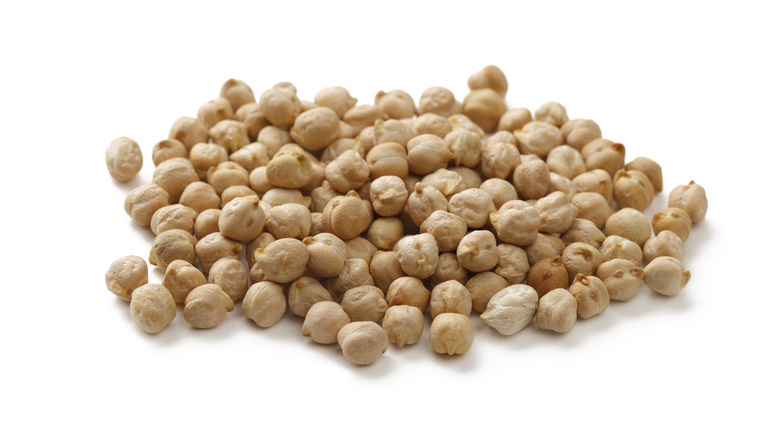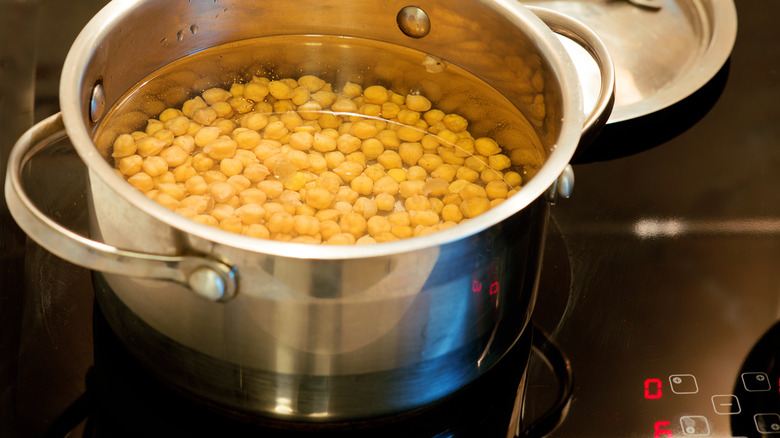What To Keep In Mind When Substituting Dried Chickpeas For Canned
Chickpeas are a great dietary addition, whether cooked in a can or dry in a bag. Fundamentally, canned and dry chickpeas are about as different from each other as chickpeas and garbanzo beans are. In other words, they are pretty much the same. While each form of chickpea packaging comes with pros and cons, they both make viable options for chickpea recipes, from Indian chana masala to Moroccan vegetable tagine.
Though all kinds of chickpeas will yield a delicious end product, when cooking with chickpeas, you need to be conscious of the recipe's measuring instructions and the type of chickpeas you have. This is not because the type of chickpea will affect your final product's taste but because you cannot substitute dry and canned chickpeas in a one-to-one ratio. Canned chickpeas are more voluminous due to their water content, so properly measuring your chickpeas is essential to creating perfectly balanced recipes.
The importance of the chickpea ratio
Chickpeas in a can are pre-cooked and hydrated, therefore, they are larger and less dense than dry chickpeas. A pound of dry chickpeas measures just under 3 cups. At the same weight cooked, they measure at 7 cups. If you are following a recipe that calls for cooked chickpeas but only have dry chickpeas on hand, cutting the suggested measurement by around half should give you a sufficient amount.
For instance, if a baked falafel recipe calls for two 15-ounce cans of chickpeas, which equates to 3 cups, you can substitute with 1½ cups of dry chickpeas. When cooked, they will about double in size. Just bear in mind that the total prep time will increase since the bean-cooking process is notoriously long. Chickpeas take about two hours to cook, but that is also after soaking, which is an overnight process. Plan and prepare accordingly if you anticipate using dry chickpeas in a recipe.
Which chickpeas make the superior cooking choice?
When scanning the bean section at the grocery store, you may find yourself at a dry-canned crossroads. The difference in quality between canned and dry chickpeas is negligible, so the choice comes down to your preference for convenience or customization. In the United States, canned beans are on a par per serving than dry beans, but this is not necessarily the case with chickpeas. For instance, as of 2024, dry chickpeas are priced at $0.10 per ounce at Target, and their canned counterparts are $0.05 per ounce. At Walmart, dry chickpeas are priced at about $0.09 per ounce, and canned chickpeas are about $0.06 per ounce.
A significant perk of cooking with dry chickpeas is that you have complete control over how they are cooked. You can add as much or as little salt to the batch as you please. Or, if you want to infuse the chickpeas with some extra flavor, you can soak them in broth instead of water. With some time devotion and ratio awareness, dry chickpeas have a lot of promise.


